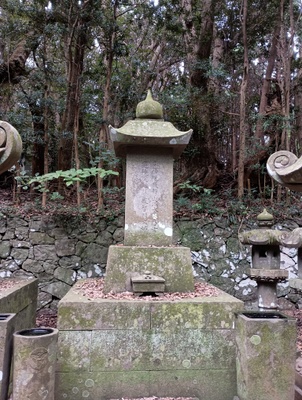Matsura Seizan

- Born: 1760/1/20
- Died: 1841/6/29
- Titles: Iki-no-kami
- Other Names: 松浦清 (Matsura Kiyoshi), 松浦英三郎 (Matsura Eizaburou)
- Japanese: 松浦静山 (Matsura Seizan)
Matsura Kiyoshi, perhaps more well-known by his art-name (gô) Matsura Seizan, was the 9th lord of Hirado han (61,500 koku[1]). He is especially known for his 200-volume Kasshi yawa, a collection of records of his thoughts and experiences.
Known as Eizaburô as a child, he was born in 1760 the son of Matsura Masanobu, who was in turn the third son of the 8th lord of Hirado, Matsura Sanenobu. His father Masanobu died in 1771, and upon his grandfather's retirement in 1775/2, Eizaburô, known by his adult name Kiyoshi, became lord of Hirado at the age of 16, with 61,700 koku. His rank and title were Junior Lower Fifth Rank, Iki-no-kami. Facing chronic difficulties in the domain finances, Kiyoshi undertook numerous structural and economic reforms, and is credited with considerable noticeable successes in that realm.
A studious person even from a young age, and avid poet, Kiyoshi took on the poetry name Seizan, and promoted study and the arts in his domain. He is said to have been well-versed in the customs of both elite samurai and court society, Chinese and Japanese history, historical anecdotes, waka, herbalism, natural history, folklore, and Rangaku, among other fields. He engaged in intellectual and cultural intercourse with many prominent scholars of his time, including Kimura Kenkadô, Minagawa Kien, Sanada Yukitsura (lord of Matsushiro han), and Ôseki Masunari (lord of Kurohane han). In 1779, he opened a han school called the Ishinkan, and the following year established libraries known as Gakusaidô in Hirado, and Kan'onsai in Edo. He then also established a the Kenkisai in 1784, an office for the compilation of histories; the Matsura kaseiden was compiled there.
Seizan was also active in martial arts and military matters. He practiced Shingyôtô-ryû swordsmanship, and strengthened domain military preparedness & maritime defenses.
As daimyô, Seizan was obliged to travel between his domain, in Kyushu, and Edo, every other year; his 200-volume Kasshi yawa ("Evening Stories of the Kinoe Year")[2], written from 1821/11 until his death in 1841, reveals his great interest in spectacles and special events. He is known to have attended machi-iri Noh on at least one occasion (likely somewhat often),[3] and to have purchased woodblock prints depicting the Ryukyuan embassy to Edo of 1790. He describes the street processions of the 1832 mission in some detail, in a section of the Kasshi yawa known as Hoshin ryûheiki.[4]
He retired in 1806, and entered the tutelage of his friend Hayashi Jussai, head of the Hayashi clan of Confucian scholars. Following his death in 1841 at the age of 82, he was buried at Tenshô-ji in the Honjo neighborhood of Edo.
References
- "Matsura Seizan," Bijitsu jinmei jiten, Shibunkaku.
- "Matsura Seizan," Asahi Nihon rekishi jinbutsu jiten, Asahi Shimbunsha.
- "Matsura Seizan," Sekai daihyakka jiten, Hitachi Solutions, 2013.
- "Matsura Seizan," Britannica kokusai daihyakka jiten, Britannica Japan, 2014.
- ↑ Fukai Masaumi 深井雅海, Tôken to kakutsuke 刀剣と格付け, Tokyo: Yoshikawa kôbunkan (2018), 78.
- ↑ Kinoe is the first of the sixty combinations in the sexegenary cycle; the day on which he began the diary was such a day in the cycle.
- ↑ Anne Walthall, "Hiding the shoguns: Secrecy and the nature of political authority in Tokugawa Japan," in Bernard Scheid and Mark Teeuwen (eds.) The Culture of Secrecy in Japanese Religion, Routledge (2006), 354n36.
- ↑ Ronald Toby, "Carnival of the Aliens: Korean Embassies in Edo-Period Art and Popular Culture," Monumenta Nipponica 41:4 (1986), 416, 422-423.